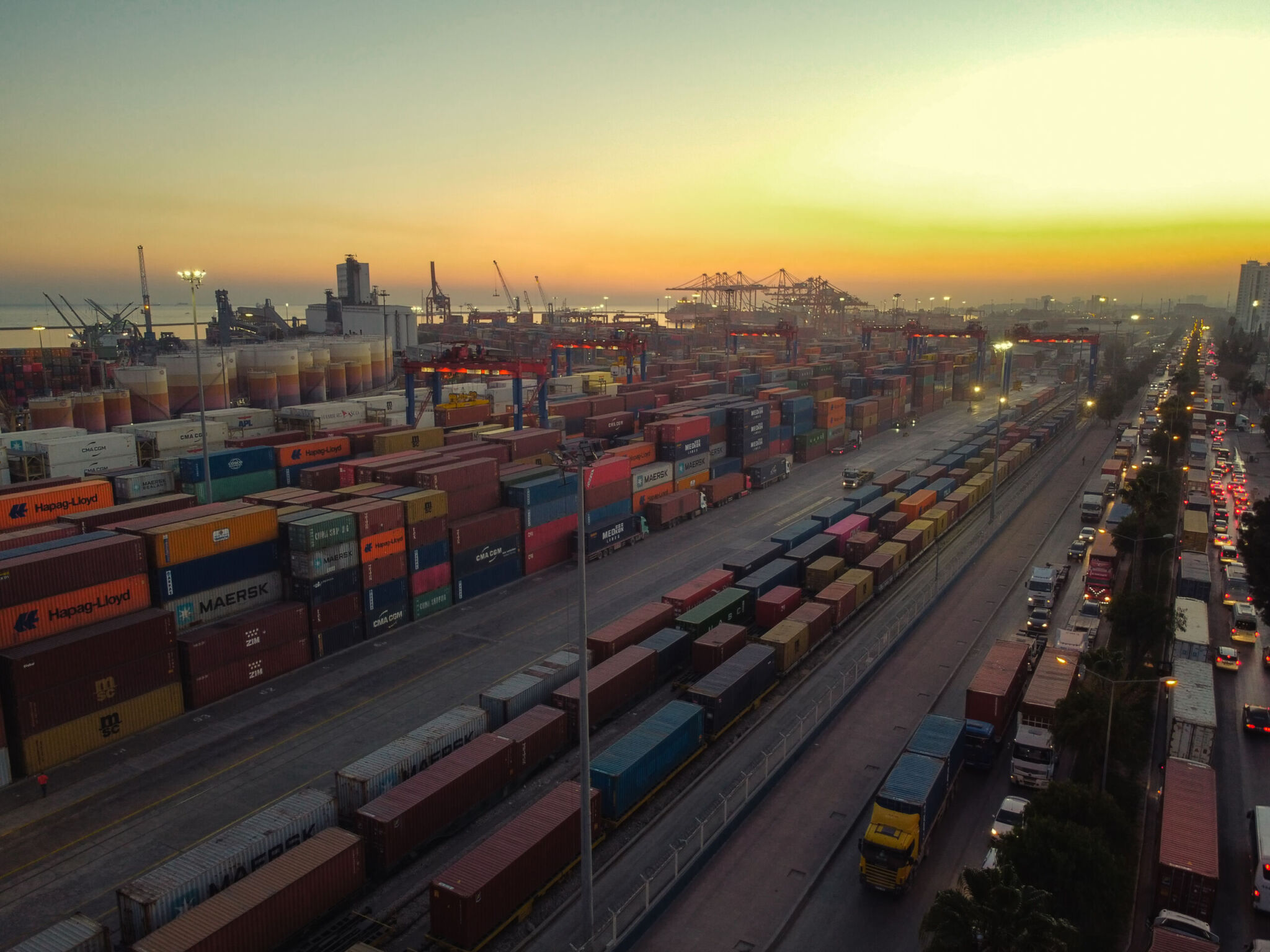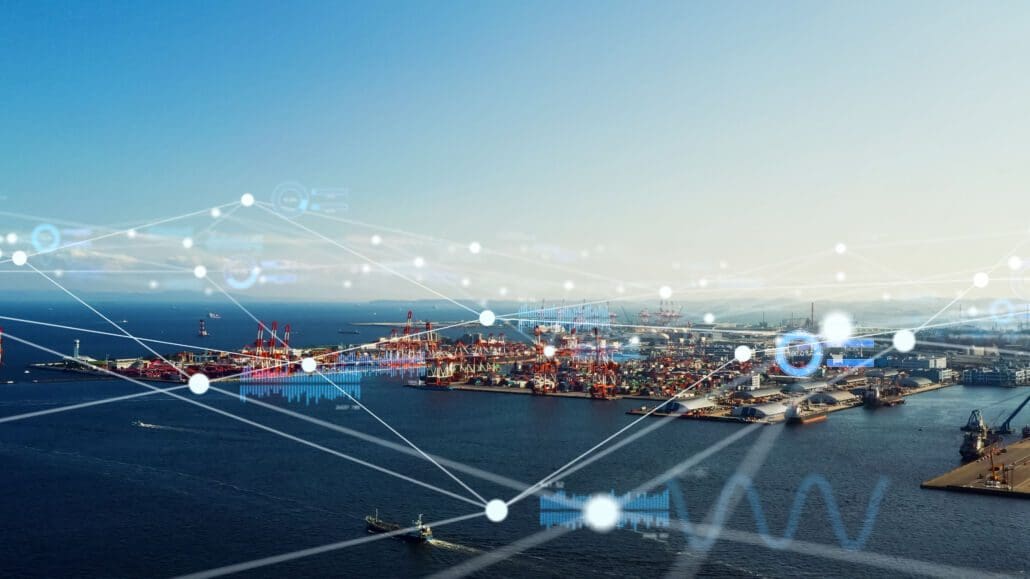
How Can Technology Alleviate Port Congestion?
Evening traffic jam at city industrial area. Cargo container warehouse at sea port and sunset city panorama. Mersin, Turkey - December 2020.
According to Container Xchange, freight and financial experts, and other specialists in the field, the causes of port congestion are much more structural than simply seasonal difficulties. And in recent years, the coronavirus, which has disrupted supply chains, and political volatility have only added to port congestion, costing businesses millions of dollars a year in delayed deliveries and warehouse congestion and frustrating consumers with the rising price of goods.
Port congestion creates pressure on cargo owners, shipping lines, and in turn, port management. The port management needs to increase efficiency in handling the ships, expand the infrastructure of the ports, and hire more workers. These factors collectively force the shipping companies to increase their operational costs, as they might lose their credibility if they don’t transport goods at the promised time. Congestion also means the cargo can miss connecting ships or trucks to different destinations and scheduling problems.
Container Xchange.
So what is happening, and how can technology alleviate port congestion? There are numerous causes, but the three most important are infrastructure, cargo handling, and the environment.
- Infrastructure
- Inadequate ports for current needs: As the maritime industry continues to grow, the infrastructure no longer suits current vessel traffic and port operations in many ports. Ships not only get bigger, putting stress on port hinterlands but also the number of goods delivered each year increases, requiring an upgrade in surrounding infrastructure.
- Lack of handling equipment: In addition to this, there is a serious problem of lack of port handling equipment and insufficient staff. That includes a shortage of chassis, scant yard space, poor hinterland connections, and in some cases, unprepared personnel.
- Cargo handling
- Slow overall productivity due to paper-based reprocesses: According to Boston Consulting Group research, despite some innovations ports are trying to implement, many aspects of port ground operations remain anchored in the past, making them still dependent on paper-based systems, causing overall slow productivity and incapacity to face ever-increasing vessel sizes and cargo volumes.
- Mishandling and cargo damage: It is not uncommon for cargo to arrive damaged. At least 95% of cargo damage happens because of improper packing, stowage, and unprofessional loading (like not knowing how many pallets fit in a container or how much space leave between each unit).
- Missing documents, duties, and taxes: handling international cargo can be a difficult and time-consuming task if you don’t have the expertise. Many of the delays and bottlenecks at ports are due to human error, such as the lack of documents to allow the entry of merchandise to a new country, the confusion in the payment of taxes, and even, although it sounds impossible, the lack of understanding of a language. Yes! It has happened that due to errors in translation, and understanding, among others, it is not possible to dispatch a load.
- Environment
- Inability to solve unforeseen events: the pandemic has shown us that many businesses were not prepared to deal with unforeseen challenges, change their operations and go digital with their processes. Ports, overall, weren’t able to react appropriately to the demand for goods. After that, wars, staff shortages, extreme weather conditions, and economic volatility have contributed to the problem.
What technologies are being used to alleviate port congestion?
The most advanced ports around the world, like those in Abu Dhabi, Rotterdam, and Singapore, are embracing the same digital breakthrough technologies that have disrupted other industries before and are providing lessons on efficiency and productivity. Among the innovations are connected platforms, cloud-based services, mobile devices and apps, sensors, and other Internet of Things technologies, which we will discuss next.
- Internet of Things (IoT): As a result of the clear need to digitize delivery processes for monitoring cargo and shipping with smart sensors, IoT has become the cornerstone of broader tech transformation.
What does this solve?
Delays and GIS. By installing sensors to monitor physical assets, managers can georeference to monitor traffic, optimize dispatch, reduce delays, track and report full and empty containers, plan schedules, and better distribute arrivals, warehouse spaces, and deliveries.
- Blockchain technology: This technology allows ports and deliveries to safely collect and pool data from various stages in the supply chain while recording transactions across computers, so records aren’t altered by any means.
What does this solve?
Inefficiency. In a paper-based industry like this one, blockchain technology allows businesses and ports to ditch the pen and paper and digitalize supply chains, eliminate recordkeeping efforts, promote faster and easier transactions, and streamline the supply chain by enabling real-time communication.
- Drones: This is one of those technologies the logistics industry is borrowing from others to power its operations. Drones in ports are mostly used for controlling aerial cargo transport, monitoring ships, cleaning the local environment, and facilitating the construction of new terminals. Nevertheless, some projects point to more uses, such as delivering messages and medium-sized cargo from
one point of the port to another.
What does this solve?
Safety issues and times of dispatch. Ports, like the Long Beach one, have reported that using drones in their routine operations has helped them improve safety, reduce staff and rework costs, and enhance operational efficiency. This has shortened the frame times between containers arriving and getting dispatched, liberating space and organization throughout the process.
- High Bay Storage (HBS) System: This is an automated container handling system that stacks containers up to 11 floors high, delivering more than three times the capacity of a conventional yard. The latest pilots show a reduction of 70% of the land area needed to support terminal operations and an increase of space by a hectare of 300% in comparison with a Rubber Tyred Gantry Crane.
What does this solve?
This primarily addresses the space issue, but it also improves performance, such as handling speed, energy efficiency, safety, and operating costs.
- Data and analytics: by having real-time, accurate, high-quality data, supply chains stop being reactive to risks, taking a more proactive approach to unforeseen events and issues. One great example of this is Singapore’s Maritime and Port Authority, which established a data-enabled traffic management tool to forecast and predict vessel arrival times and estimate potential traffic congestion using predictive analytics.
What does this solve?
The speculative, unproductive approach to unforeseen events. By automating processes related to core functions, like finance, human resources, transport, and supply chain management, businesses obtain actionable insights and reports. This allows them to rapidly catch issues, assign tasks, move field teams, and permanently resolve and improve. Data and analytics make ports less speculative, and let managers start planning based on long-term strategies, instead of momentarily palliatives.
- Digital Exchange Platforms: These platforms digitize the entire logistics supply chain by creating a marketplace for different segments of one market. Some of those, for example, enable companies to transport cargo worldwide at the click of a button. All without having to deal with any logistics backstages or havoc along the way.
What does this solve?
Disconnection-reprocesses. By creating networks, ports and businesses can access new tools, optimize routes based on experts’ suggestions and the shared data, and increase services by getting third-party providers – like RCG Logistics– to handle the move without worrying about the ins and outs of the business, or the delays and extra fees caused by inefficient logistics.
Final thoughts
Based on numerous sources, over 20% of sales cannot be completed due to ocean carrier rates, declining to carry export cargo, unreasonable demurrage, detention charges, and ports’ inability to receive new containers due to lack of space.
According to a 2021 World Bank survey, key port performance metrics show significant discrepancies in global port efficiency, with top performers like King Abdullah Port achieving an average of 97 container moves per hour of vessel port time compared with just 26 container moves per hour at the main ports of North America’s West Coast.
What is the hallmark of those top-performing ports, then?
So, if relegated ports want to stay on top of the congestion and the structural problems the industry is currently facing, must:
- Optimize traffic across transportation modes.
- Use smart-port technologies that manage intermodal traffic effectively to control logistics and associated costs.
- Implementing truck appointment systems or single-terminal appointment systems to manage dispatches.
- Integrated intermodal systems to encompass rail and barge connections are more cost-effective.
- Invest in technologies and tools, like the 6 mentioned above. The reasons why are, at this point, evident.
How is RCG Logistics using technology to meet companies’ needs amid industry challenges?
RCG Logistics has spent years working to mitigate most of these pain points. We help businesses with their cargo and freight deliveries, so the process is transparent and easy.
As we believe in the power of technology to boost businesses, increase clients’ satisfaction, and improve industry procedures, we have recently invested 2 million dollars in a customizable software that lets customers build their drayage requirements, track their assets, receive reports, and be aware of their cargo conditions, among other things.
By working with RCG, you ensure:
- Help with the entire supply chain, from warehouses to dealerships and vice versa, in a few simple steps.
- Responding to the chassis shortage, thanks to our network of 20,000+ vendors all around the country that provide us with the appropriate equipment in every move we make.
- In-house technology and development that let us track your cargo, optimize routes, minimize fees and detentions, and build tailored strategies for your company’s requirements.
- 24/7 assistantship, plus a dedicated team to your cargo and business only.
Contact one of our agents to learn more about our Drayage services and logistics solutions.


